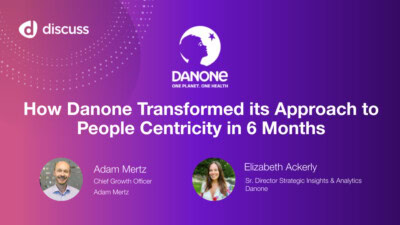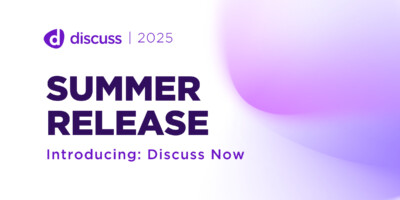What are Market Research Tools?

But first…what is market research?
Market Research (MRX) refers to the process of gathering intelligence about people’s behaviors to better understand their motivations, opinions, preferences, emotions and other factors that can define their purchasing process, brand perceptions, or customer/user experience. The intelligence gathered from market research can be used to improve customer help centers, brand messaging and marketing, new product innovations and technology, and so much more
Market research also helps organizations gauge the market feasibility of products, services, concepts and new innovations. Such research is typically held between an organization’s Insights, CX, or UX teams and their target audiences — those audiences can be either current or prospective customers. Many organizations also partner with market research agencies to gather intelligence about their target audiences.
Effective market research provides tangible, actionable insights that can drive the success of an organization’s future offerings. In the process, it also enables organizations to feel more closely connected with their end users or consumers, building customer empathy and understanding that can guide their business strategy to better serve people’s needs.
Methods for conducting market research include but are not limited to: focus groups, in-depth-interviews (IDIs), online ethnography, written or video-based surveys, and usability testing (read more on this below).
If you’re wondering how to extract actionable insights from target audiences through market research, or how feasible your latest product, feature, service or innovation will be in a current or new market, the right tools can deliver everything you need. To see how, read on.
Key methods for conducting market research
 In addition to the methods for conducting market research previously identified, other processes for extracting insights from people’s experiences include:
In addition to the methods for conducting market research previously identified, other processes for extracting insights from people’s experiences include:
- Surveys: Gauge a target audience’s opinions, obtain personal background information they provide, and understand their levels of satisfaction with a product or service through a survey. Surveys most commonly take the form of pre-written sets of questions that respondents answer on their own time. Survey questions can also appear within an online focus group. And finally, survey questions can be sent as prompts for respondents to provide video or photo-based responses, which market research platforms like Discuss can provide.
- Focus groups: Also known as ‘group interviews,’ focus group research gathers a small but demographically similar group of people for feedback. This qualitative research method collects data through interactive and directed discussions, facilitated by a skilled moderator. Focus groups make use of group interaction to explore and clarify the beliefs, opinions and views of focus group participants. This interactivity allows researchers to gain data and insights from multiple members simultaneously, making it a far more cost effective method for qualitative market research than one-on-one in-depth interviews. To learn more, read the Discuss guide on moderating online focus groups.
- In-depth interviews: An In-Depth Interview, or IDI, is another type of qualitative research method involving a personal interview with a single respondent. These are conducted one on one, although there may be hidden observers (as the Discuss platform supports). These should be conducted by a highly skilled interviewer, as the purpose of in-depth interviews is to understand the underlying motivations, beliefs, attitudes, and feelings of respondents on a particular subject or brand.
- Observation: This market research technique involves directly observing customers or another target audience in their natural environment. For example, researchers could conduct a shop-along in-person or online as their subject visits a retail shop and explains their buying choices. UX researchers commonly use the observational method through mobile apps to monitor how users navigate a website to identify any challenges or opportunities to improve the experience. See an example of this in action as Unilever utilizes the Discuss mobile screen share app to conduct a mobile shop-along. Ethnography is another market research method that combines observational, hands-on learning and interviewing techniques.
- Field Trials: Field trials involve experiments or tests to discover whether proposed products work and how they are perceived. Field trials are most commonly used in the bioscience, medical and pharmaceutical industries, and are critical in obtaining government approval for use in the general public, or for securing more research funding to further develop products.
Why do you need market research tools?
In the past few years, market research tools have become critical in predicting the behavior of target audiences — especially at a time when consumer behavior has been transformed dramatically and brand loyalty becomes less reliable.
In a recent McKinsey survey, 40% of consumers across four countries said they have tried new brands or retailers. Loyalty was particularly vulnerable in the US, where 46% have switched brands.
Market research tools can provide real-time data and feedback from increasingly moving targets. Such MRX tools enable innovative agencies and in-house teams to:
- Better understand and predict market trends
- Gather context of online traffic and other behavior
- Gain insight into specific industry topics
For example, Think With Google Research Tools is a suite of market research tools that collect customer and user behavioral data in a number of ways. “Google Trends” provides data directly from the Google search engine to enable researchers to track and measure specific searches. Need to understand if anyone is searching for your current product, or using search terms that match the description of an upcoming product launch? Google Trends could be an effective tool to use.
 Market research tools with Discuss
Market research tools with Discuss
Discuss offers a set of market research tools and capabilities that empower CX, UX, and Insights teams to conduct qualitative research. The core features of our People Experience Platform include:
- Discuss Live: For live, video-based conversations to support qualitative market research at scale
- Discuss Collections: To upload any pre-recorded media, including unmoderated feedback (known as ‘Discuss Self Captures’)
- Discuss Insights: To extract insights from both Discuss Live and Discuss Collections using our AI-powered insights extraction engine
- Discuss Experts: Offering recruitment, moderation, translation, project management, live support, discussion guide writing and more
Conclusion
Market research tools, when used effectively, drive immeasurable value when businesses are able to understand people beyond just data points and spreadsheets. By studying their target audience’s perceptions, opinions, beliefs, attitudes and reactions, organizations big and small can make better, more informed decisions backed by strong people intelligence.
Read our post, “Online Qualitative Research Basics,” to uncover the value in gathering people intelligence through focus groups, IDIs and more.
Ready to unlock human-centric market insights?
Related Articles

5 Trends Shaping the Future of Qualitative Insights
By Jim Longo, Co-Founder & Chief Strategy Officer at Discuss Each year, the Greenbook Research Industry Trends (GRIT) Business &…
By Jim Longo, Co-Founder & Chief Strategy Officer at Discuss Each year, the Greenbook Research Industry Trends (GRIT) Business &…

Navigating Tomorrow: A Glimpse into the Future of Market Research in 2024
Author: Jim Longo, Co-founder & Chief Strategy Officer As a veteran with over 30 years in the market research industry,…
Author: Jim Longo, Co-founder & Chief Strategy Officer As a veteran with over 30 years in the market research industry,…

Qualitative Research: Understanding the Goal and Benefits for Effective Analysis
As market trends evolve at lightning speed in the age of digital transformation, having an intimate understanding of consumer desires…
As market trends evolve at lightning speed in the age of digital transformation, having an intimate understanding of consumer desires…




 Market research tools with Discuss
Market research tools with Discuss